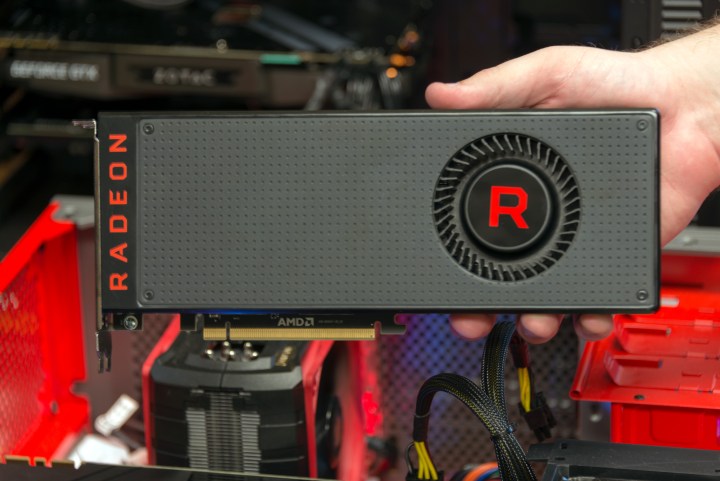
If you’ve been looking for a Radeon RX Vega card at retail but came up short, understand that you’re not alone. Sources in the upstream supply chain indicate that AMD simply can’t meet demand as a result of low packaging yield rates, according to a report from Digitimes.
The design of the Vega series integrates high bandwidth memory into the GPU, which makes the packaging process a little more difficult, and has resulted in yield rates that are lower than anticipated. There are also reports that issues with Advanced Semiconductor Engineering’s packaging technology could be a contributing factor.
AMD has noted that demand for the cards has been higher than expected, and confirmed that it is working with its manufacturing partners to ensure that more stock can be distributed to retailers as quickly as possible. Both the standalone Radeon RX Vega graphics cards and the bundled Gamer Packs are set to be made available, reportedly within the coming days.
It’s expected that the supply chain shortages will mean that most retailers will only receive a small allocation of the GPUs. As a result, the graphics cards aren’t expected to be easy to find until at least October.
This of course isn’t an ideal situation for AMD to be in, given that demand for the cards seems to be particularly high. There are reports that Nvidia has reconsidered its plans to rush production of its new Volta architecture, delaying the move from late 2017 to the previously rumored timeframe of early 2018.
Digital Trends’ review of the Radeon RX Vega series concluded that the cards offer superior gaming performance and excellent memory bandwidth, all at a price point that’s very compelling — it’s a good option for anyone looking for a cost-effective GPU, assuming you can find one in the wild.



